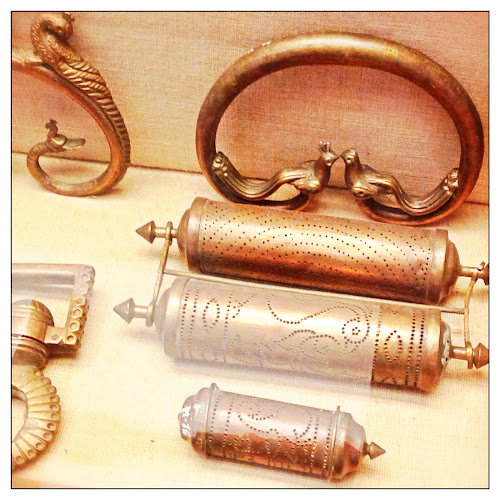Every year after harvest there is a big festival called Chherta where every house is repaired, whitewashed, and freshly decorated with clay reliefs...women try to outdo each other to make their houses the most attractive. These become incredibly vivid 3-D murals with characters half on/half off the wall, other materials like string and wire are added as well. Whitewashed backgrounds have radiating and/or swirled-line grooves that the women make using their fingers.
For individual project panels, children could create backgrounds using white paint on cardboard, swirling their fingers in smooth strokes to create a similarly textured canvas...(tempera or acrylic paint could be thickened with cornstarch or gel medium to hold the texture). In a subsequent class they could create characters using a theme like 'playing with friends' or 'climbing a tree.' Construction paper collage would work but shouldn't be glued down to the background all the way, as some 3-D effect best captures the real thing. True 3-D with paper mâché pulp or model magic would be great. Either way, found elements like string and wire should be incorporated.
This would make a great mural project as there can be multiple work areas, and everyone doesn't have to be standing at the mural at the same time. Real whitewash can be used, its lack of true opacity and its affordability, not to mention its authenticity, would be great. A collaborative mural wherein children from different classes and grades contribute their 3-D objects and they are attached to the wall by a teacher or by an older class would work nicely.
Click here for a video tour of the mural:











































